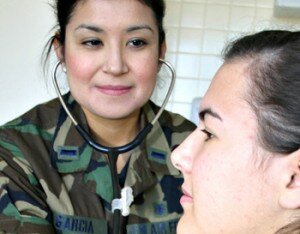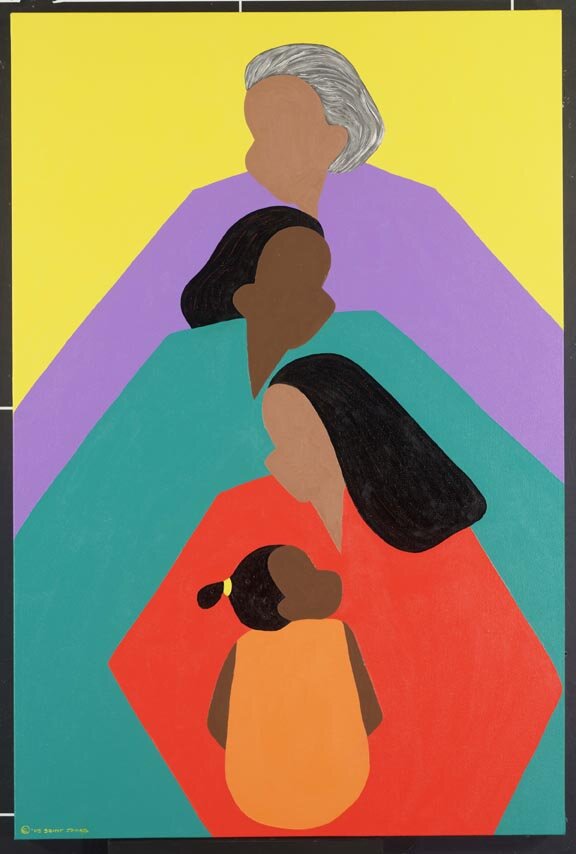 by Sonia Shah
by Sonia Shah
Originally published on May 2, 2010 for the Los Angeles Times and cross posted here with permission from the author.
Last week, in honor of World Malaria Day, viewers of “American Idol” were urged to donate $10 for an insecticide-treated bed net to save an African child from malaria, the mosquito-transmitted scourge that infects about 300 million people every year, killing nearly 1 million.
The premise behind the idea of treated nets is simple. The netting prevents malarial mosquitoes from biting people while they’re asleep, and the insecticide kills and repels the insects. World health experts say that using the nets can reduce child mortality in malarial regions by 20 percent.
 But even as donations roll in and millions of bed nets pile up in warehouses across Africa, aid agencies and nongovernmental organizations are quietly grappling with a problem: Data suggest that, at least in some places, nearly half of Africans who have access to the nets refuse to sleep under them.
But even as donations roll in and millions of bed nets pile up in warehouses across Africa, aid agencies and nongovernmental organizations are quietly grappling with a problem: Data suggest that, at least in some places, nearly half of Africans who have access to the nets refuse to sleep under them.
Why that is gets to the heart of the trouble with our efforts to dislodge the diseases of the very poor. When scientists first developed the treated nets in the late 1990s, they were hailed by international donors and aid agencies as a magic bullet for malaria. Unlike nearly everything else that combats the disease, including better housing and drainage, anti-malarial drugs and insecticidal spray campaigns, the insecticide-doused nets are cheap and easy to use. Equally important, they require little infrastructure on the ground. A single volunteer on a motorcycle can distribute hundreds of nets a day, in even the most remote locales. There is no need for cold storage to keep drugs and vaccines refrigerated, nor for expert clinicians to oversee proper dosage.
To date, millions of dollars from international agencies, NGOs and USAID have been spent to get treated nets into the hands of impoverished, sub-Saharan Africans. The inter-agency Roll Back Malaria Partnership is calling for 730 million more.
 But, as even the staunchest advocate will admit, the treated nets were not designed with the cultural preferences of the rural African villager in mind. Among other design flaws, their tight mesh blocks ventilation, a serious problem in the hot, humid places where malaria roosts. Minor discomfort might be tolerable in rural African communities desperate for anti-malarial prevention. But, as medical anthropologists have consistently found, because malaria is so common in much of sub-Saharan Africa, and because the overwhelming majority of cases go away on their own, most rural Africans consider malaria a minor ailment, the way that Westerners might think of the cold or flu. Many rural people also believe that malaria is caused not just by mosquitoes but also by other factors such as mangoes, or hard work.
But, as even the staunchest advocate will admit, the treated nets were not designed with the cultural preferences of the rural African villager in mind. Among other design flaws, their tight mesh blocks ventilation, a serious problem in the hot, humid places where malaria roosts. Minor discomfort might be tolerable in rural African communities desperate for anti-malarial prevention. But, as medical anthropologists have consistently found, because malaria is so common in much of sub-Saharan Africa, and because the overwhelming majority of cases go away on their own, most rural Africans consider malaria a minor ailment, the way that Westerners might think of the cold or flu. Many rural people also believe that malaria is caused not just by mosquitoes but also by other factors such as mangoes, or hard work.
As a result, while we see the treated nets as a lifesaving gift, they see them as a discomfort that provides only partial protection against a trivial illness. Is it any wonder that many use their nets to catch fish or as wedding veils or room dividers — all documented uses of insecticide-treated bed nets? If that sounds ungrateful, think about what would happen if public health officials, concerned about the 41,000 lives that Americans lose every year due to flu, blanketed the United States with anti-viral face masks to be worn during the winter flu season. Donning masks would be a simple, safe and effective measure that could save thousands of lives. But would people wear them?

At a recent meeting in Washington, a group of aid workers, social scientists and businesspeople active in various net programs met to consider the bed net dilemma. All agreed that thanks to the sheer scale of the current distribution effort, many nets will be hung over sleeping mats, even as others are hoarded, resold and diverted to other uses. As a result, many cases of malaria will be averted.
But then what? The nets don’t last forever. In three or fo
ur years, they will need to be replaced. If local people do not seek out new ones, whether from the local health clinic or the marketplace, today’s remarkable and historic net donation effort will have to begin anew, and be repeated, indefinitely.
Nobody in the room underestimated the dilemma, and their frustration was palpable. “You can see the train wreck coming,” one said dolefully.
This is not an insoluble problem. Some aid groups, aware of local ambivalence about the nets, have started education programs to support bed net distribution efforts, urging the rural poor to actually unwrap and sleep under the nets they’ve been given. It’s not an easy or cheap fix, of course. Such exertions take time and money — exactly what bed nets were suppos
ed to save.
Perhaps what we need is a whole new approach. Instead of masterminding solutions for distant problems and then handing them down from on high — as we do not just in our anti-malaria efforts but in a variety of aid programs aimed at extreme poverty — we should empower the poor to come up with their own solutions, and then help figure out how to implement them.
Such a process might not lead to grand, magic-bullet solutions. More likely, we’d get micro-solutions, variable from locale to locale, from village to village. But we’d be supporting self-reliance and building goodwill along the way. And we’d surely avoid the wastefulness — and really, the affront — of befuddling communities with “gifts” that many neither want nor use.
 Sonia Shah is the author of “,” which will be published by Sarah Crichton Books/Farrar, Straus & Giroux in July. She wrote this for the Los Angeles Times (McClatchy-Tribune).
Sonia Shah is the author of “,” which will be published by Sarah Crichton Books/Farrar, Straus & Giroux in July. She wrote this for the Los Angeles Times (McClatchy-Tribune).
 We all have a role to play in women’s health. Women often serve as caregivers for their families, putting the needs of their spouses, partners, children, and parents before their own. As a result, women’s health and well-being becomes secondary. As a community, we have a responsibility to support the important women we know and do everything we can to help them take steps for longer, healthier, and happier lives.
We all have a role to play in women’s health. Women often serve as caregivers for their families, putting the needs of their spouses, partners, children, and parents before their own. As a result, women’s health and well-being becomes secondary. As a community, we have a responsibility to support the important women we know and do everything we can to help them take steps for longer, healthier, and happier lives. HIV, and Syphilis.
HIV, and Syphilis.

 utt clean-up! Do you constantly see cigarette butts thrown on sidewalks, parks, beaches and other public property? Are you sick of this unnecessary litter? Well, this activity is just for you! You can organize a cigarette butt clean-up to raise awareness of the effects of discarded cigarette butts! Gather volunteers and Collect cigarette butts in garbage bags and count them along the way. Make sure everyone wears gloves!
utt clean-up! Do you constantly see cigarette butts thrown on sidewalks, parks, beaches and other public property? Are you sick of this unnecessary litter? Well, this activity is just for you! You can organize a cigarette butt clean-up to raise awareness of the effects of discarded cigarette butts! Gather volunteers and Collect cigarette butts in garbage bags and count them along the way. Make sure everyone wears gloves!


 the blessings of their lives. And while many act from a place of privilege, it is perhaps most inspiring to hear from people who find a way to serve others when they themselves are suffering.
the blessings of their lives. And while many act from a place of privilege, it is perhaps most inspiring to hear from people who find a way to serve others when they themselves are suffering. by Sonia Shah
by Sonia Shah
 But, as even the staunchest advocate will admit, the treated nets were not designed with the cultural preferences of the rural African villager in mind. Among other design flaws, their tight mesh blocks ventilation, a serious problem in the hot, humid places where malaria roosts. Minor discomfort might be tolerable in rural African communities desperate for anti-malarial prevention. But, as medical anthropologists have consistently found, because malaria is so common in much of sub-Saharan Africa, and because the overwhelming majority of cases go away on their own, most rural Africans consider malaria a minor ailment, the way that Westerners might think of the cold or flu. Many rural people also believe that malaria is caused not just by mosquitoes but also by other factors such as mangoes, or hard work.
But, as even the staunchest advocate will admit, the treated nets were not designed with the cultural preferences of the rural African villager in mind. Among other design flaws, their tight mesh blocks ventilation, a serious problem in the hot, humid places where malaria roosts. Minor discomfort might be tolerable in rural African communities desperate for anti-malarial prevention. But, as medical anthropologists have consistently found, because malaria is so common in much of sub-Saharan Africa, and because the overwhelming majority of cases go away on their own, most rural Africans consider malaria a minor ailment, the way that Westerners might think of the cold or flu. Many rural people also believe that malaria is caused not just by mosquitoes but also by other factors such as mangoes, or hard work.
 Sonia Shah is the author of “,” which will be published by Sarah Crichton Books/Farrar, Straus & Giroux in July. She wrote this for the Los Angeles Times (McClatchy-Tribune).
Sonia Shah is the author of “,” which will be published by Sarah Crichton Books/Farrar, Straus & Giroux in July. She wrote this for the Los Angeles Times (McClatchy-Tribune).
